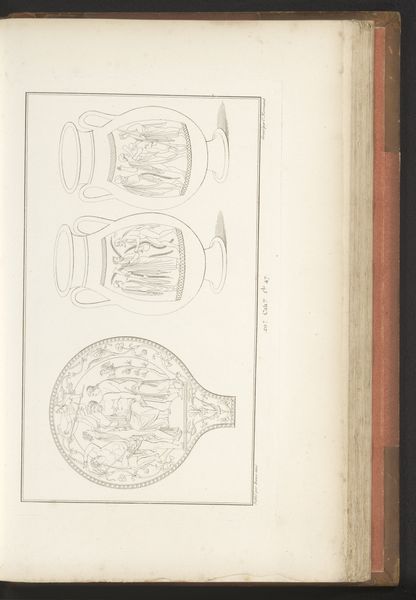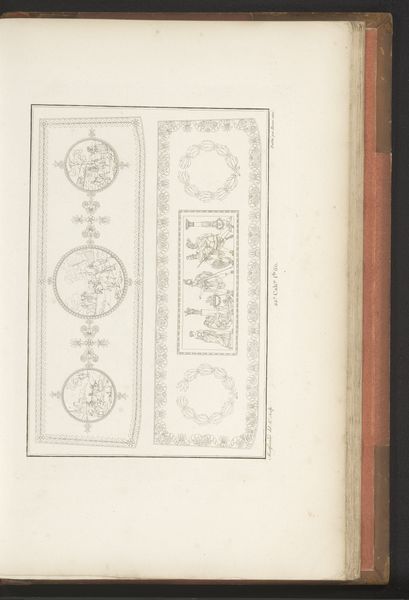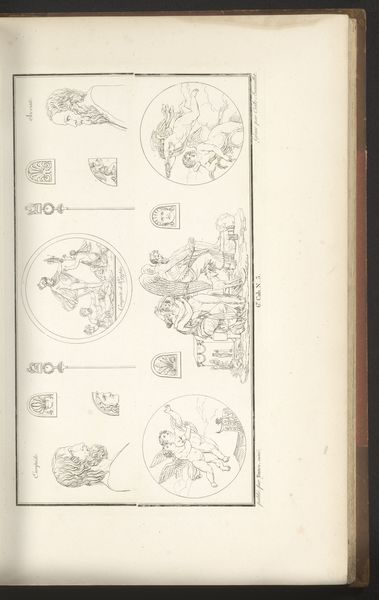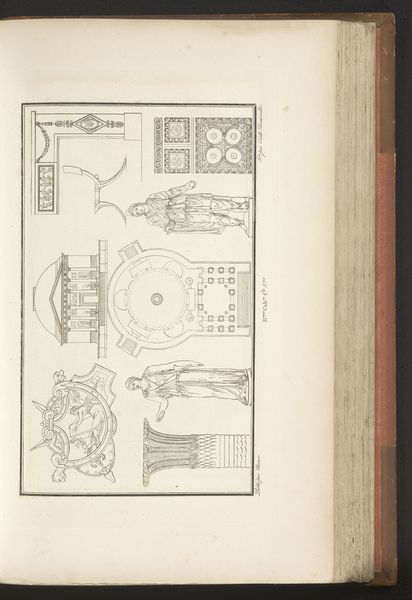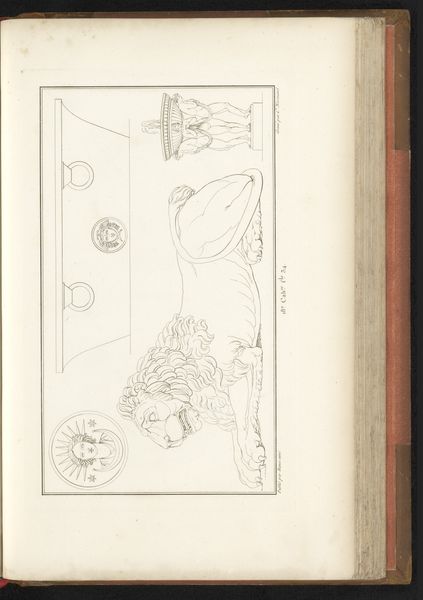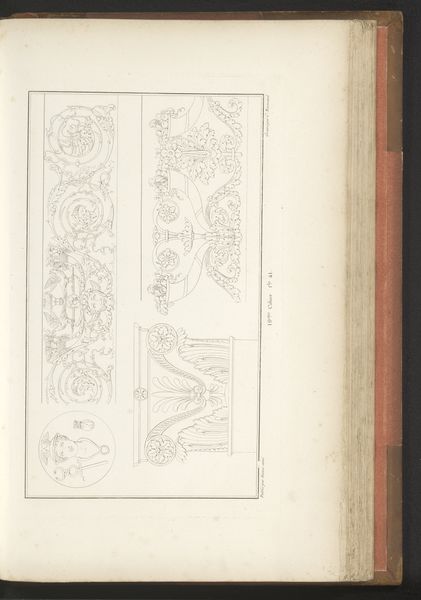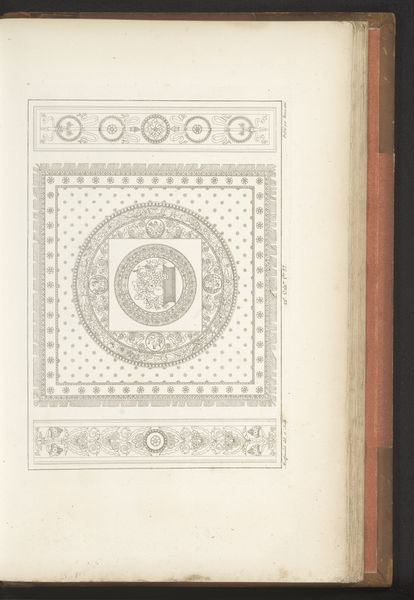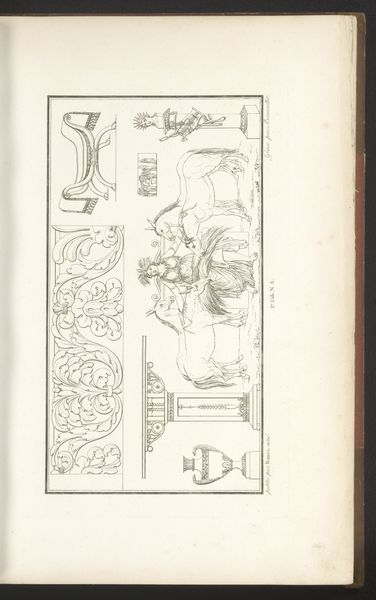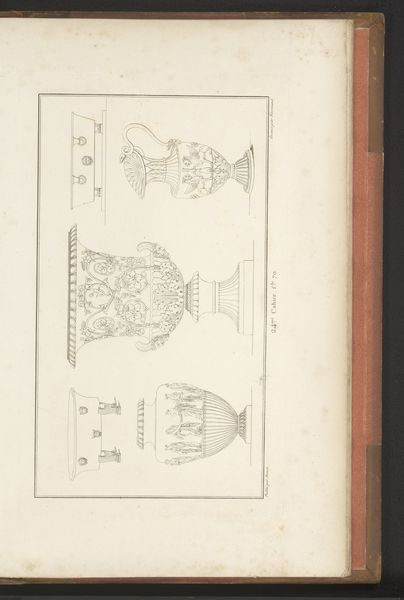
drawing, paper, ink
#
drawing
#
neoclacissism
#
paper
#
ink
#
geometric
Dimensions: height mm, width mm
Copyright: Rijks Museum: Open Domain
Curator: Here we have a page from August Ricard de Montferrand’s "Decoraties", a drawing rendered in ink on paper around 1820. Editor: Immediately, the precision strikes me. Six neat compartments, each containing what looks like a design proposal. A stark contrast in how design happens today with software! Curator: Absolutely. Montferrand was a neoclassical architect. Notice the repeated motifs: wreaths, urns, geometric borders. It speaks to a fascination with antiquity. What emotions do these precise symbols and patterns evoke for you? Editor: The rigid framework almost evokes a sense of formality, as well as of mass production with so many of these motifs on the same page, organized on a tight grid. Curator: Indeed, the very organization might point to neoclassical ideals of order. The ink drawings point to different iconographies, maybe even various options that were under consideration, so in the symbolic reading they speak to permanence, power, maybe civic virtue given his era and context. Editor: Thinking about the process here...the artist spent hours, maybe days, carefully creating each one by hand, from scratch. Imagine the cost in human time, both physical and intellectual, of producing design concepts at scale, with each idea realized in ink! And that level of labor changes the perceived value. Curator: That’s true, considering their materiality certainly emphasizes their place in design history as well. The repeated forms speak to something universal though, beyond labor, as they can point to larger systems of power or virtue. Take for instance the repeated column design. Columns represent support and structure, literally and figuratively, reflecting on lasting concepts and social hierarchies. Editor: I agree on the structural significance of forms! When thinking of how such precision drawing techniques faded and gave way to quicker reproduction, the original drawing becomes a poignant artifact to showcase that creative production. Curator: Fascinating. Thinking of these images now through both those lenses, their original intent, coupled with this now almost obsolete means of production, makes them resonate anew. Editor: Precisely, revealing multiple meanings through that interplay.
Comments
No comments
Be the first to comment and join the conversation on the ultimate creative platform.
